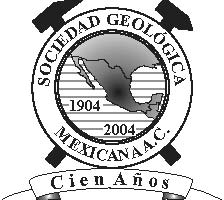|
BOLETÍN DE LA SOCIEDAD GEOLÓGICA MEXICANA VOL. 59, NÚM:. 2, 2007, p. 183-201 ttp://dx.doi.org/10.18268/BSGM2007v59n2a4 |
|
Geología y procesos de remoción en masa asociados a un domo volcánico tipo couleé: cerro El Tenayo, Tlalnepantla, Estado de México
Víctor Carlos-Valerio1,*, †Armando García-Palomo2, , Celia López-Miguel3, Adriana H. Galván-García1
1 Posgrado en Ciencias de la Tierra, Instituto de Geología, Universidad Nacional Autónoma de México.
2 Departamento de Geología Regional, Instituto de Geología, Universidad Nacional Autónoma de México.
3 Centro Regional de Investigaciones Multidisciplinarias, Universidad Nacional Autónoma de México.
* This email address is being protected from spambots. You need JavaScript enabled to view it.
Abstract
El Tenayo dome is located SW of the Guadalupe range (GR). The Tenayo is a couleé dome or lava dome, emplacement on a paleotopography that controls a flow direction of S40°W, forming an elongated axe in that direction. The dome is affected by a reactivated fault named Tenayuca Fault. The Tenayo dome presents systematic arrangement of blocks with different geometry, as tabular, columnar, wedge, subrounded and irregular shapes. The discontinuities that bound the blocks are: cooling joints, flow bands and tectonic fractures. These features control the instability of the dome slopes. According to the blocks disposition and the orientation of the discontinuities, the main movements generated on the Tenayo hills are: toppling, planar and wedge slide, debris flow and rock fall formed by detachment and rolling. In order to describe the landslides a zonation of the dome is proposed. Finally, some advices to consider in remedial works are given.
Keywords: Cerro El Tenayo, Tenayuca Fault, couleé dome, landslides, discontinuities.


